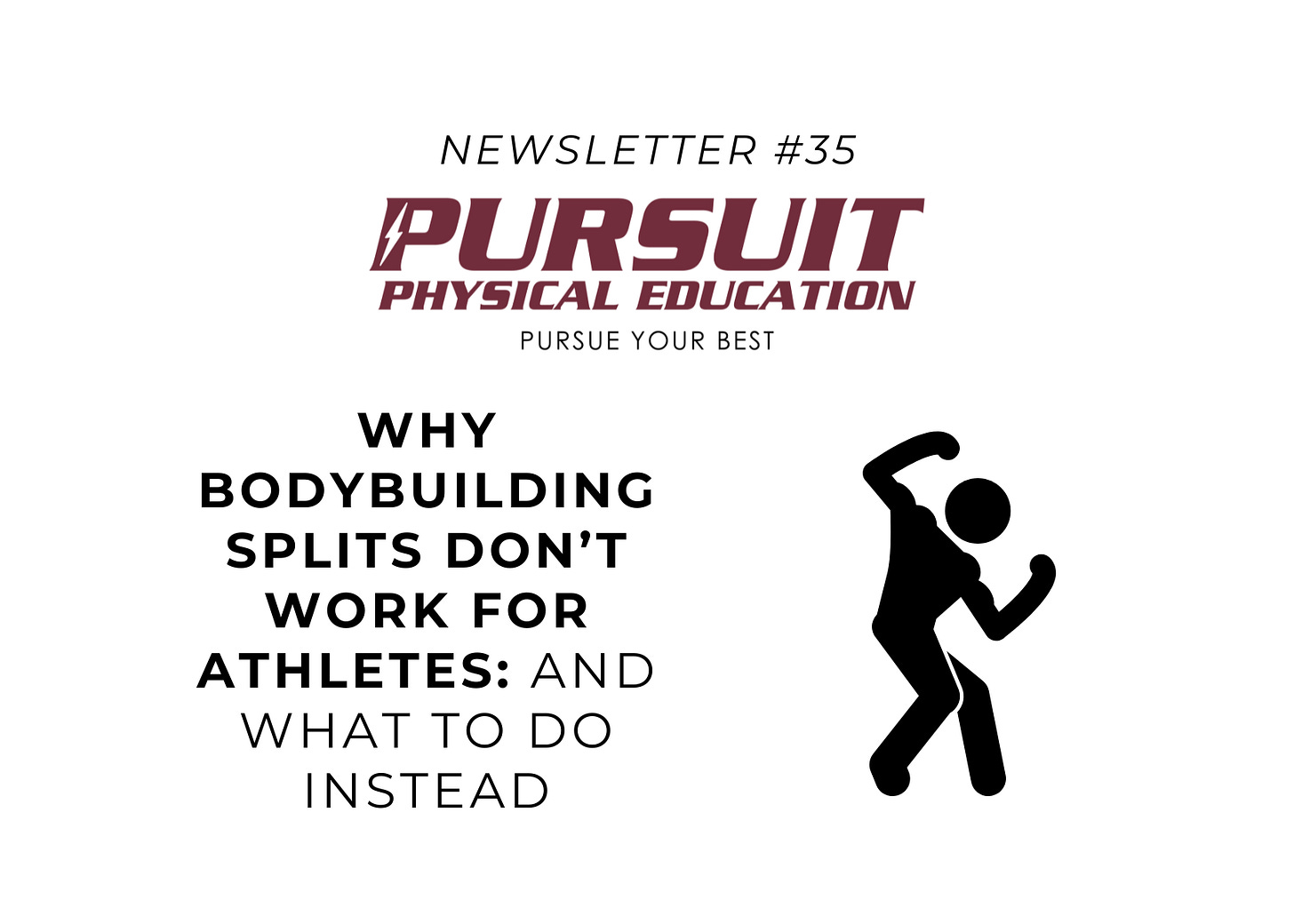Why Bodybuilding Splits Don’t Work for Athletes: And What to Do Instead
#35 – Strength & Speed Coaching – Pursuing Your Best ⚡
Quick Note:
Apologies for the delay in getting this week’s edition out—I got behind on work and needed a little extra time to get this one right. I appreciate your patience and support. To make it up to you, I’ll be releasing both this one and the final issue in the Training Split series this weekend.
Now—let’s talk about why “arm day” isn’t cutting it.
Keep reading with a 7-day free trial
Subscribe to Pursuit PE to keep reading this post and get 7 days of free access to the full post archives.



